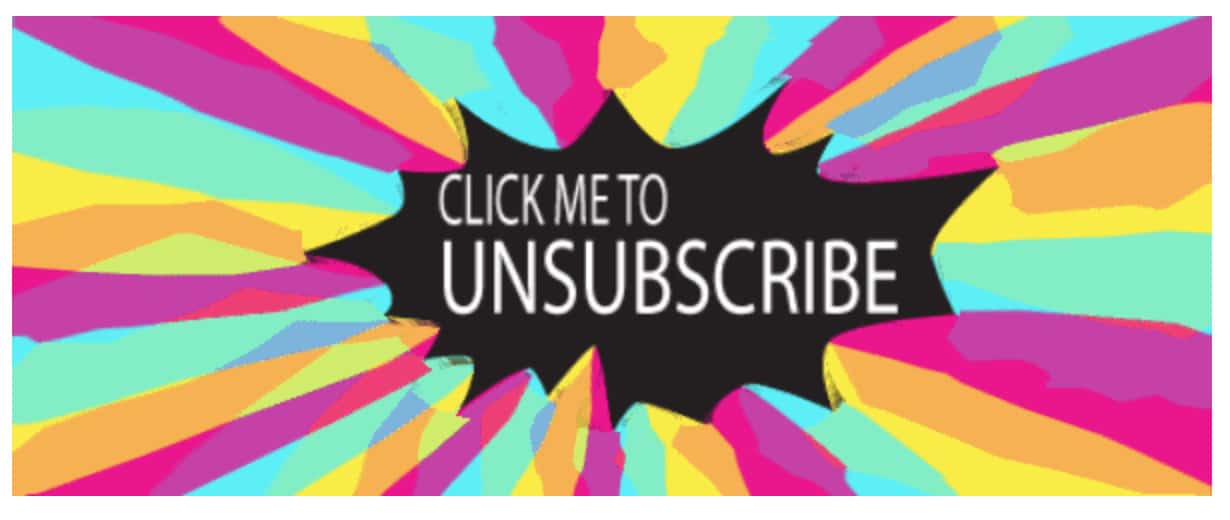Is your marketing mediocre? A checklist.
This morning I got this email from a subscriber to my newsletter. He wrote:
I recently sat down with my Demand Gen team to discuss landing page conversion and marketing strategies for our B2B company. My argument was that we haven't quite developed our brand personality, and we don't have much of a voice, and our content is kind of … me too. I was met with, "For marketers, boring is better."
His (and my) first reaction: Ugh.
But my second reaction: "Boring is better" is a curious response, isn't it? What's behind the mindset to maintain a kind of B2B status quo: boring, predictable, mediocre?
Fear of doing something risky?
Fear of failing?
Fear of upending the expectations of customers or bosses or clients?
Maybe all of the above?
Here's my feeling:
Boring isn't better in B2B. Mediocre is a miserable place to be in marketing.
And the Station of Status Quo is a stop on the commuter rail to the graveyard of snuffed out dreams.
What's that quote from Disney chairman Bob Iger …?
"The riskiest thing we can do is just maintain the status quo."
Yet Status Quo Station is often as bustling as Grand Central. Scientists have a name for why we opt for the status quo instead of pushing boundaries.
It's called the Status Quo Bias: an emotion bias that maintains a preference for the current state of affairs. Any baseline—the current status of things—is taken as a reference point, and any deviation or change from that baseline is perceived as a murky place to avoid.
In other words, we don't want to change. Because change is hard. And it's terrifying.
How Status Quo Creeps In
You and I see it all the time—not just in my email inbox when I get a plea for help from a subscriber and share it with you.
I see it in the content brands produce all the time—in our ebooks, white papers, infographics, blog posts, Twitter feeds, emails… all of it.
People, brands, companies, organizations, shops, nonprofits, libraries, realtors, tech leaders, demand gen experts often pay more attention to how they look than what they're actually saying in their marketing—and how they're actually saying it.
And that's where Status Quo bias creeps in: We sand off the interesting, rough parts so we can sound like everyone else.
We say the expected stuff that defines us most broadly, instead of honing the great, weird story that makes us unique.
Your story sets you apart. And how you tell it in your own brand voice is your single biggest opportunity.
So how do you know if you're on board the train to Status Quo Station? How do you know if your marketing is mediocre?
Here's a checklist for you. Or maybe share with your boss or CEO when he or she, too, claims that "boring is better."
1. Your audience doesn't miss you.
Every time I travel, without fail I miss my beloved little spaniel, Abby. And when I return home again, she barks and wriggles and bumps her small furry body against my legs, as if to let me literally feel her joy.
(Of course, Abby reacts this way whether I go to Mumbai or to the mailbox. Because, #dog.)
Is your audience an Abby?
Is there someone waiting for you in eager anticipation? Someone who misses you when you go away? Someone who would miss you if never showed up again?
Is that too high a bar for "marketing"? I don't think so.
Because your content should aim to build an audience that values the experience you give them. Your content should aim to build a community as loyal to you as my spaniel is to me.
2. Too many people show up at your party.
Your marketing can't serve more than one audience (and their needs, hopes, dreams) at any one time.
So: understand whom you're talking to, exactly. Know how you fit into their lives. Know what problems you solve for them, and what advice they look to you for.
And conversely: know whom you aren't a good fit for.
Actively repel those who aren't a good fit for you. In part, because you can't speak to more than one audience at once. And, also, because you'll hone your audience insight when you further understand who ISN'T a good fit for you.
And because we're here together at Emma, let's talk about how this plays out in email: Celebrate your unsubscribes—or, at least, encourage them.
Most companies hide the unsubscribe button at the footer of the email, in microscopic print. But I love how my friend Chris Penn's newsletter https://www.christopherspenn.com/newsletter/ doesn't hide the unsubscribe button in the footer.
Instead, it shows up in the center of his weekly email, wearing its party pants:
Why would Chris actively encourage people to unsubscribe with a technicolor, glorious graphic smack in the middle of his weekly email?
Because Chris is a smart marketer who knows that a strong list is full of engaged people who want to hear from you… not a bunch of people who can take you or leave you.
It's not the size of the list, it's the quality of the list. We hear this all the time. We know it intellectually. So are we acting on it?
3. You're watching only one metric.
Every marketing metric should have a buddy—a Sam to a Frodo, a Charlotte to a Wilbur, a Kendall to a Kylie. Your marketing measurement needs a Buddy System.
This insight is from my friend Avinash Kaushik, my go-to source for all things marketing metrics and measurement.
I'm about content and writing and messaging; Avinash is about measuring the effectiveness of it all. Avinash completes me, in a marketing sense. And he calls the focus on a single metric "the tyranny of a single KPI."
"Single KPI organizations create incomplete incentives and a myopic view of success. Over a medium or long period of time, these companies go bye-bye," Avinash says.
A buddy-metric system keeps your content on the right path. He adds:
If Conversion Rate is the KPI and the goal is 5%, I can get 5% CR by ensuring I cherry pick channels, offers and targeting. I can give everyone $50 off, I can decide not to go after competitive customers, I can ignore incrementality, and on and on. The business gets 5% yet loses long-term.
But if you pair conversion rate with, say, revenue, you get better, healthier long-term results. Pairing up the right buddies creates "balance for the overall business (not a narrow single team or channel)," Avinash says.
4. You don't edit for clarity, brevity.
"Clarity" = clear to your customer—not just to you.
Best way to accomplish this: Hit pause before publish. Swap places with your reader. Look at what you've created from their point of view: Is the value obvious? Is it crystal-clear?
"Brevity" does not = "short" and "snackable." (A word I'm so fundamentally allergic to that I had to take a Benadryl just to type it.)
"Brevity" means concise: You aren't wasting your audience's time with a lot of fluff and set up. A 4,000-word guide on Applying the Perfect Posture in Plyometrics can work here if it's packed Tetris-tight with useful information.
Clarity, brevity for your audience is a way to practice empathy, by the way. What does your audience really need from you? Will they miss it if you go away?
5. 'I'll Write How They're Writing!'
You know how when you go to a restaurant with a group of people and you're trying to decide what to eat and the person next to you orders the exact thing you had your eye on...?
Sometimes marketing feels that way: Your competitors are talking about the same thing you are.
This is where brand voice comes in. Voice is unique to you—and it could only come from you:
If your logo fell off your marketing, would you recognize you?
So how can you develop and document your own unique brand voice? Consider these three brand voice guides for inspiration:
6. You're lacking intent.
The way to grab that one-way ticket OUT of Status Quo Station is to embrace the five checklist items above, then infuse them all with strategic intent.
We are way past creating random acts of content—uncoupled like a runaway engine.
Don't let your marketing be feral—roaming wild and free of intent.
You are not Status Quo. Neither is your marketing.
You got this.
MOST RECENT ARTICLES
Want to engage your audience and grow your brand? Try Emma's robust easy-to-use product today.













